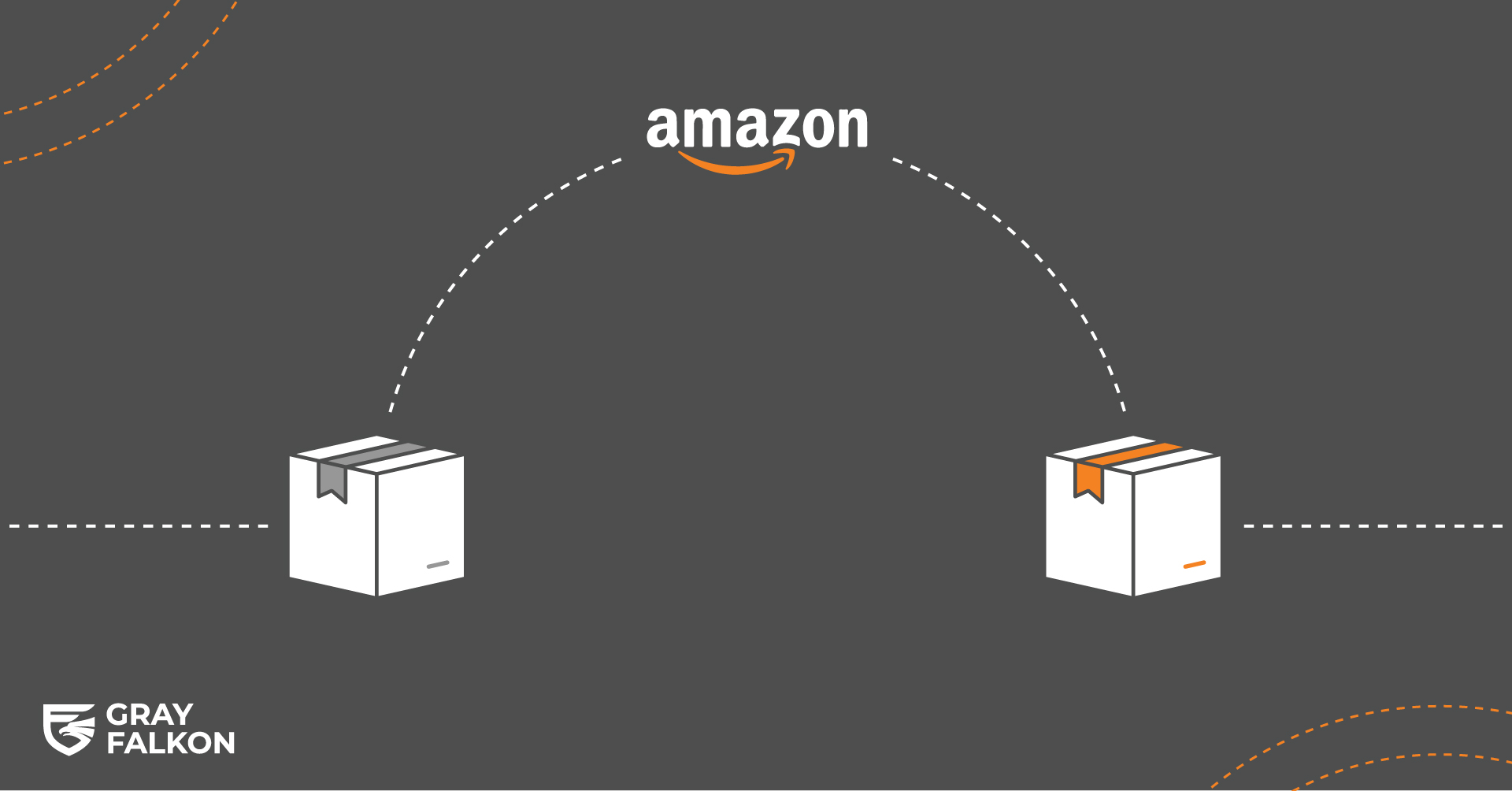
Amazon stands as a colossal marketplace, hosting millions of transactions each day. Among the business models that have thrived under Amazon’s umbrella, drop shipping has notably gained traction. This model, which allows third-party sellers to list and sell products without maintaining any physical inventory, poses unique challenges and opportunities. For established brands, drop shipping is a double-edged sword. While it opens doors to expanded market reach and distribution, it simultaneously exposes brands to risks associated with product authenticity, quality control, and unauthorized seller activity.
Drop shipping adds intricacies to brand equity, reputation, pricing strategies, and customer experience on Amazon. As the landscape of eCommerce evolves, understanding and mitigating the impacts of drop shipping is crucial for any brand aiming to maintain control over its presence in Amazon’s dynamic marketplace.
The Drop Shipping Model on Amazon
Drop shipping on Amazon operates under a simple premise: sellers list products for sale on the platform, but instead of stocking these items themselves, they purchase them from a third party and have them shipped directly to the consumer. This means the seller never physically handles the product, which significantly reduces their operational costs and risks. However, this convenience also comes with substantial challenges, particularly for brands whose products are being sold.
Traditionally, brands might rely on Amazon’s Fulfillment by Amazon (FBA) service, where products are stored, packed, and shipped by Amazon, ensuring a level of quality control and customer service. In contrast, drop shipping relinquishes control from both the brand and Amazon, placing it in the hands of third-party suppliers who may not adhere to the same standards.
The model is attractive to many sellers due to its low barrier to entry. As a result, Amazon’s marketplace has seen a surge in drop shipping activities, with a diverse range of products from global suppliers being offered to Amazon customers. While this increases the assortment of products available, it also introduces variability in the quality and authenticity of goods sold, potentially diluting brand integrity and consumer trust.
Challenges Posed by Drop Shipping to Brands
Product Authenticity and Quality Control
One of the paramount concerns for brands with the rise of drop shipping is the risk of counterfeit or gray market products. As sellers are not required to source products directly from the brand or authorized distributors, the market is susceptible to infiltration by fake items masquerading as genuine. These counterfeit products not only undermine the brand’s reputation but also lead to customer dissatisfaction and potential safety issues.
Quality control is another critical challenge. In traditional retail or even when using Amazon FBA, brands have significant oversight over how products are stored, handled, and shipped. Drop shipping strips away this layer of control, leaving brands vulnerable to negative customer experiences caused by damaged or defective products arriving at the customer’s doorstep. The impact of such experiences can be detrimental, leading to negative reviews and a tarnished brand image.
Unauthorized Sellers
The openness of the Amazon marketplace enables virtually anyone to become a seller, including those who may not have any formal relationship with the brand they are selling. This scenario often leads to unauthorized sellers who may compete with authorized sellers, often undercutting prices without adhering to the brand’s established pricing strategies or customer service expectations.
These unauthorized sellers can create a host of issues for brands, including market cannibalization, where they compete against their products unknowingly, and price erosion, where the perceived value of the brand diminishes due to inconsistent pricing across the platform.
Pricing Conflicts
Drop shipping can exacerbate issues related to Minimum Advertised Price (MAP) policies and other pricing agreements. Brands often establish MAP policies to maintain a consistent customer perception of value and to ensure a level playing field for all authorized retailers. However, drop shippers, often operating with minimal margins and oversight, may disregard these policies, leading to price wars that can devalue the brand significantly.
The lack of adherence to pricing policies affects not only the brand’s profitability but also its relationships with other retailers and distributors who abide by the agreed-upon terms. This creates an uneven competitive environment where loyal distributors might feel undercut and might reconsider their association with the brand.
Legal and Policy Framework on Amazon
Amazon has established a variety of policies to regulate the marketplace and protect both sellers and buyers. Understanding and navigating these policies is crucial for brands to effectively manage the challenges posed by drop shipping.
Overview of Amazon Policies Regarding Drop Shipping
Amazon permits drop shipping under specific conditions that ensure sellers are responsible for the safe delivery of products and compliance with Amazon’s customer service standards. According to Amazon’s drop shipping policy, a seller must:
- Be the seller of record of their products.
- Identify themselves as the seller of their products on all packing slips and other information included or provided in connection with them.
- Remove any third-party packing slips, invoices, or other information identifying a third-party drop shipper before shipping the order.
- Be responsible for accepting and processing customer returns of their products.
- Comply with all other terms of their seller agreement and applicable Amazon policies.
Violation of these policies can lead to account suspension or other penalties, which underscores the importance of compliance.
Consequences for Policy Violations
Amazon takes violations of its selling policies seriously, especially when they jeopardize the customer experience or undermine the integrity of the marketplace. Brands and sellers found violating Amazon’s drop shipping or other related policies might face:
- Immediate suspension of their seller account,
- Withholding of funds,
- Legal action, including lawsuits or other legal proceedings.
Amazon also actively monitors and enforces actions against counterfeit and unauthorized sellers through programs like Amazon Project Zero. This program empowers brands to help drive counterfeit products to zero by providing tools to directly remove counterfeit listings.
Navigating Amazon’s Policy for Brand Protection
For brands, navigating Amazon’s policy framework is not just about compliance but also about proactive engagement. Brands should:
- Regularly monitor their product listings for price violations, unauthorized sellers, and counterfeit goods using tools like Amazon Brand Registry and IP Accelerator.
- Engage in proactive reporting and enforcement activities to maintain control over their listings.
- Educate authorized sellers on the importance of adhering to Amazon policies and brand standards to ensure a consistent brand presence and customer experience.
By utilizing Amazon’s frameworks and tools, brands can better manage the impacts of drop shipping on their products and preserve their reputation and customer trust.
Drop Shipping, Amazon Arbitrage, and Gray Market Activities
Understanding the nuances between drop shipping, Amazon arbitrage, and gray market activities is crucial for brands aiming to maintain control over their presence in online marketplaces. Each of these sales methods presents brands with unique challenges and requires different strategies for effective management or mitigation.
Drop Shipping
As discussed earlier, drop shipping involves sellers who list products on Amazon without holding inventory, relying on third-party suppliers to fulfill orders directly. The primary challenges for brands here include:
- Lack of direct control over inventory and logistics,
- Potential quality issues with products not handled by the brand,
- Difficulty in enforcing Minimum Advertised Price (MAP) compliance due to multiple layers of sellers.
Amazon Arbitrage
Amazon arbitrage involves buying products from one marketplace or retailer at a lower price and then selling them on Amazon at a higher price. While this can be a legitimate way to capitalize on price differences, it poses specific challenges:
- Arbitrage can lead to market saturation, diminishing the uniqueness of the brand’s offerings,
- It can create price instability, which may affect the brand’s regular pricing strategy and customer perception,
- Similar to drop shipping, arbitrage sellers may not adhere to the brand’s MAP or other pricing policies, creating conflict with authorized sellers.
Read our full article on Amazon Arbitrage and how it affects authorized sellers on Amazon.
Gray Market Activities And Unauthorized Sellers
Gray market refers to the sale of genuine products through unauthorized channels. These products are not counterfeit but are sold outside of the brand’s authorized distribution channels, often without warranty or customer support. The challenges include:
- Erosion of brand value due to non-compliance with pricing and promotional strategies,
- Potential warranty and service issues that can lead to customer dissatisfaction,
- Legal and policy complexities in different jurisdictions can complicate enforcement efforts.
Comparative Challenges
While drop shipping, arbitrage, and gray market sales differ in mechanics, they share common challenges for brands:
- Brand Control: All three methods can dilute brand control over how products are marketed, priced, and sold.
- Pricing Conflicts: Each can lead to violations of pricing policies like MAP, causing conflicts within the distribution network and affecting the brand’s overall pricing strategy.
- Product Integrity: There is an increased risk of product misrepresentation or poor customer experience, which can damage the brand’s reputation.
Strategies for Brands to Mitigate Negative Impacts
To effectively manage and mitigate the impacts of drop shipping, Amazon arbitrage, and gray market activities, brands must adopt a series of proactive strategies. These strategies are designed to protect brand integrity, ensure compliance with pricing policies, and maintain a high standard of customer experience.
Leveraging Gray Falkon’s AI Solution
Gray Falkon brings a cutting-edge AI solution to the forefront of brand protection. Our solution is designed to automatically detect unauthorized sellers, and identify counterfeit products across multiple online marketplaces, including Amazon. By leveraging machine learning algorithms, our full deployment solution provides real-time alerts and takes instant action to respond quickly to any infringement of policies.
The AI solution not only saves time and resources but also increases the accuracy and effectiveness of brand protection efforts.
Monitoring and Enforcement Tools
Brands should leverage advanced monitoring tools to keep a vigilant eye on their products across Amazon’s marketplace. Amazon’s Brand Registry and Project Zero are additional resources for brands to help identify counterfeit listings, unauthorized sellers, and policy violations.
Protect Your Brand On Amazon
As the eCommerce ecosystem grows more complex, brands face increasing challenges from drop shipping, Amazon arbitrage, and gray market activities. However, by implementing robust monitoring systems, engaging directly with customers, supporting authorized sellers, and when necessary, taking legal action, brands can significantly mitigate these risks. These strategies not only protect the brand’s reputation and integrity but also ensure a trustworthy shopping experience for consumers.
Schedule a demo today and learn more about how Gray Falkon’s AI-driven solution can protect your brand against unauthorized sellers.





